Makar Sankranti information (facts) (spiritual, religious, significance) (importance) (specialty)
Namaste friends, how are you doing today? Welcome to #BhagavanBhakthi website / blog.
Bhagavan Lord Sri Krishna (Vishnu) (Rama) blessings to you and your family!
In this website / blog, you will always learn about #Hinduism #Sanskrit language.
Also subscribe to my YouTube channel from this link #BhagavanBhakthi to view videos about #Hinduism #Sanskrit language.
Just before going to “Makar Sankranti information (facts) (spiritual, religious, significance) (importance) (specialty)“, let us know a brief, basic and very important information.
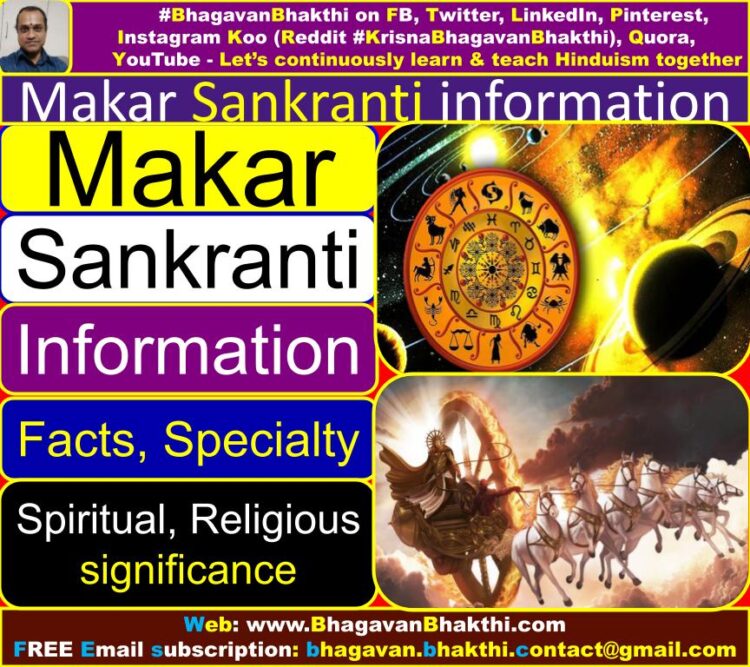
Hindu Sanatana Dharma (Hinduism) is just amazing. We celebrate not only festivals, but also days related to movement of Rashis (zodiac sign).
In Sanskrit Makar Sankranti is written as : मकर संक्रान्ति (makara saṅkrānti).
Makar (Makara) Sankranti is regarded as one of the highly auspicious, significant in the spiritual way.
And thus, people in India take a holy dip in divine rivers like Ganga, Yamuna, Sarasvati, Godavari, Sindhu, Narmada, Kaveri etc. from north India to south India and from west India to east India.
This auspicious and holy bath is considered to wipe out the sins which one had done his / her life (Present and past lives).
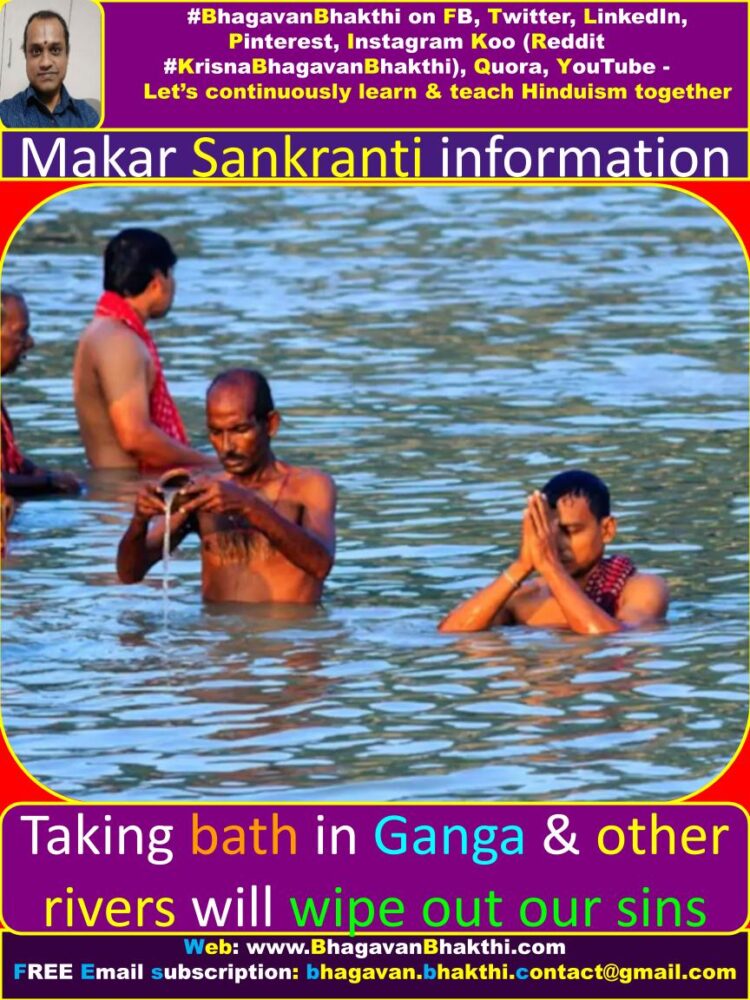
Indians (Hindus) also pray to Lord Sri Surya Deva (Sun God) on this day and thank for their successes and prosperity that Lord Sri Surya Deva and Lord Sri Vishnu has bestowed on them.
Through out India, people prepare variety of food including sweets using sesame (til / tila) and a sugar base items such as jaggery.
This type of sweet shows that all Indians will definitely live in prosperity, peace, bliss, joyfulness, etc. despite with the differences in individuals opinion and beliefs.
Whole of India, this period is considered as a part of early stages of the Rabi crop and agricultural cycle.
By this time, crops have been sown and the hard work in the fields is almost completed.
Thus, this divine and auspicious time of Makar (Makara) Sankranti signifies a period of getting together, socializing with families, friends, relatives, neighbors, etc.
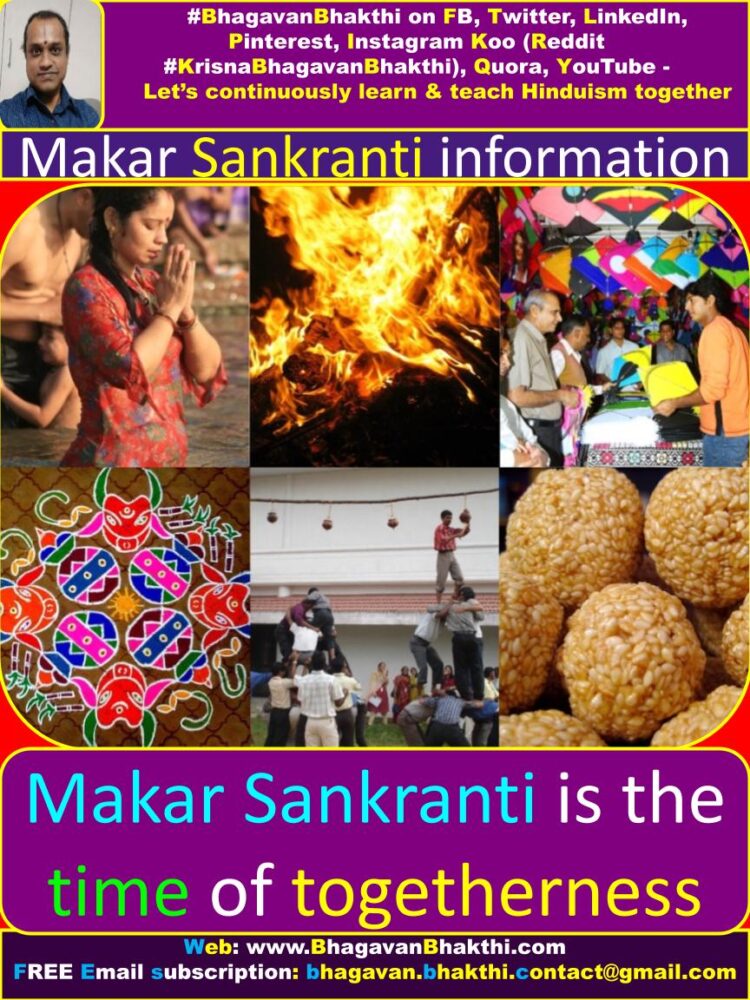
During this period of Makara (Markar) Sankranti, taking care of the cattle, and also celebrating around bonfires, in many parts of India including –
Karnataka, Telangana, Andhra Pradesh, Tamil Nadu, Maharashtra etc. is done and also flying of kites is celebrated during this time in India.
In this post (article) you will find the information about the following (contents):
Makar Sankranti meaning | Movement of Lord Surya (Sun) | When Makar Sankranti should be celebrated |
Dhanur rashi to Makar rashi | Sunrise time is important | Surya moves to Makar Rashi
Apart from India, Makara Sankranti is also celebrated in some other countries |
Start of summer | Harvest season for farmers | Dakshinayana | Sankranti date |
Passing away of Bhishma | Other names of Makara Sankranti | Bhishma gave away his life
Lord Surya moves from dakshinayana to uttarayana | Sankranti is sunrise for Devatas (Demigods) |
Both day and night both has same time frame on Sankranti | And many more… as given below |
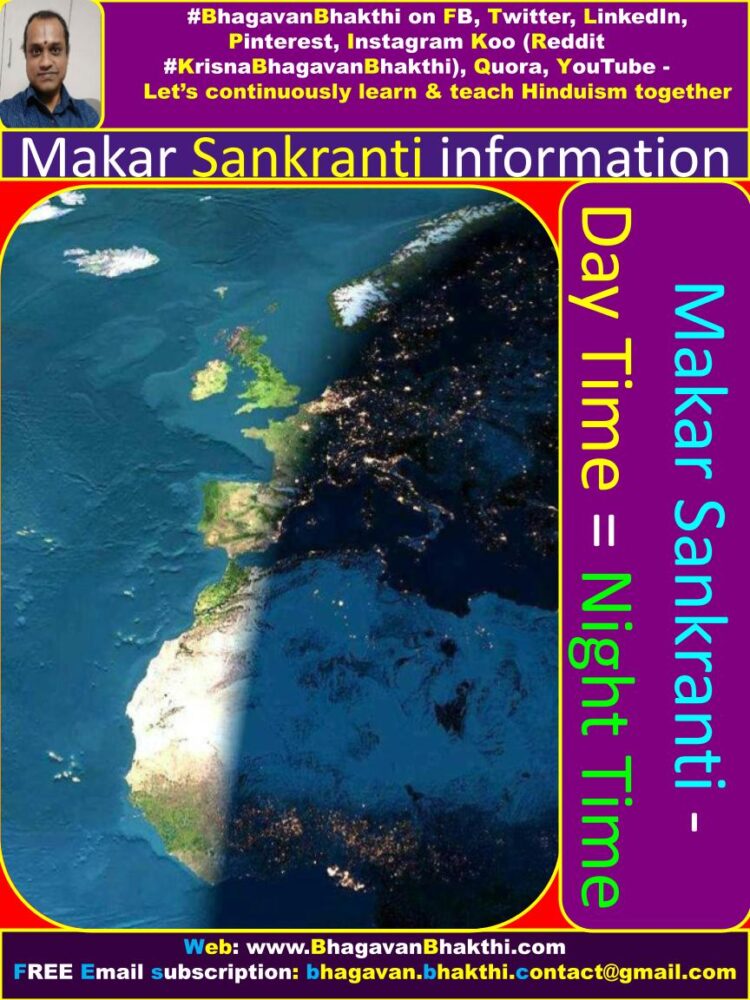
1. Makar (Makara) Sankranti meaning : ‘Makar (Makara)’ is one among the ‘rashis‘ and ‘sankranti or sankramana‘ means movement of Lord Sri Surya Deva (Sun Demi God).
2. Movement of Lord Surya (Sun) : This means, Lord Sri Surya Deva (Sun God) will move from ‘dhanur rashi‘ to ‘makar rashi‘.
Here Sankranti / sankramana means moving from one place to another. Sankramana = san + kramana. Here kramana means movement.
3. When Makar Sankranti should be celebrated : If Sun doesn’t moves from Dhanur rashi to Makar rashi during the sunrise time.
That day, we shouldn’t be considering as the festival day of Makar Sankranti, but the next day festival should be celebrated.
4. Dhanur rashi to Makar rashi : The day Lord Sri Surya Deva (Sun God) moves from ‘dhanur rashi’ to ‘makar rashi’,
on that day if this movement does not happen at the time of ‘Sunrise‘, according to Bharatiya Panchanga (Almanac), we cannot consider it as a festival day.
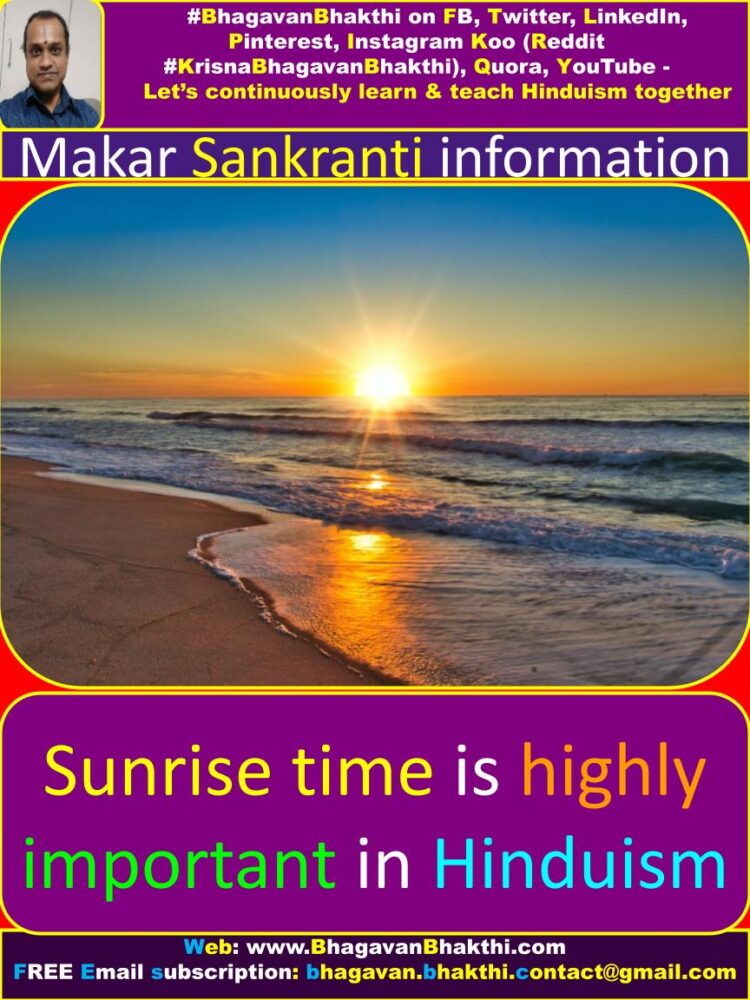
5. Sunrise time is important : According to Bharatiya samskruti (sanskriti) (Hinduism), if some change happens time of sunrise,
only then we should consider it as more auspicious occasion and a right occasion to celebrate.
6. Sun moves to Makar Rashi : During the sunrise time, if Lord Sri Surya Deva (Sun God) moves towards Makar Rashi (Capricorn) from Dhanur Rashi (Sagittarius), then on that day everyone should celebrate ‘Makara Sankranti or Makara Sankramana‘.
(Probably we need to consider the next day – please consult your local pandit to know about this).
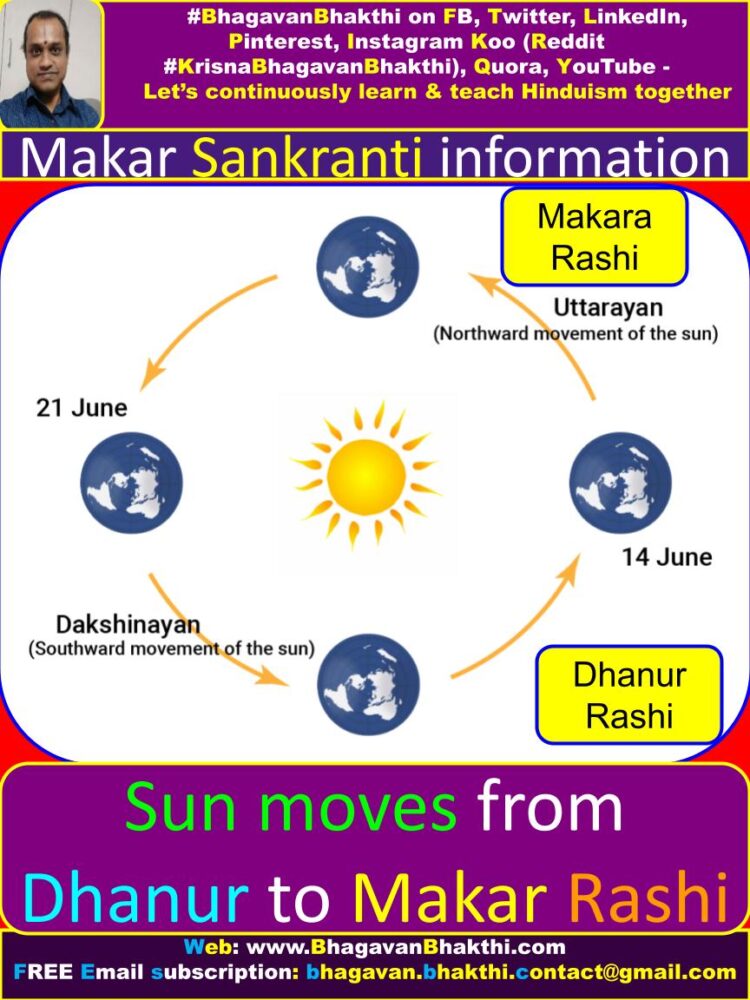
7. Apart from India, Makara Sankranti is also celebrated in some other countries :
a. Nepal celebrates it as Maghe Sankranti in January as per their calendar which marks the beginning of the month of Magha and end of the Pausha month.
b. The traditional Thai New Year Day Songkran is derived from the word Sankranti of Sanskrit language.
c. Thingyan in Myanmar Pi Ma Lao in Laos and Moha Songkran in Cambodia are also different variants of Sankranti in their respective cultures.
8. Start of summer : Basically on Sankranti day, what happens here is that as the Earth orbits the Sun,
the hemisphere that was facing away from the Sun, experiencing winter, will now face towards the Sun, marking the start of summer.
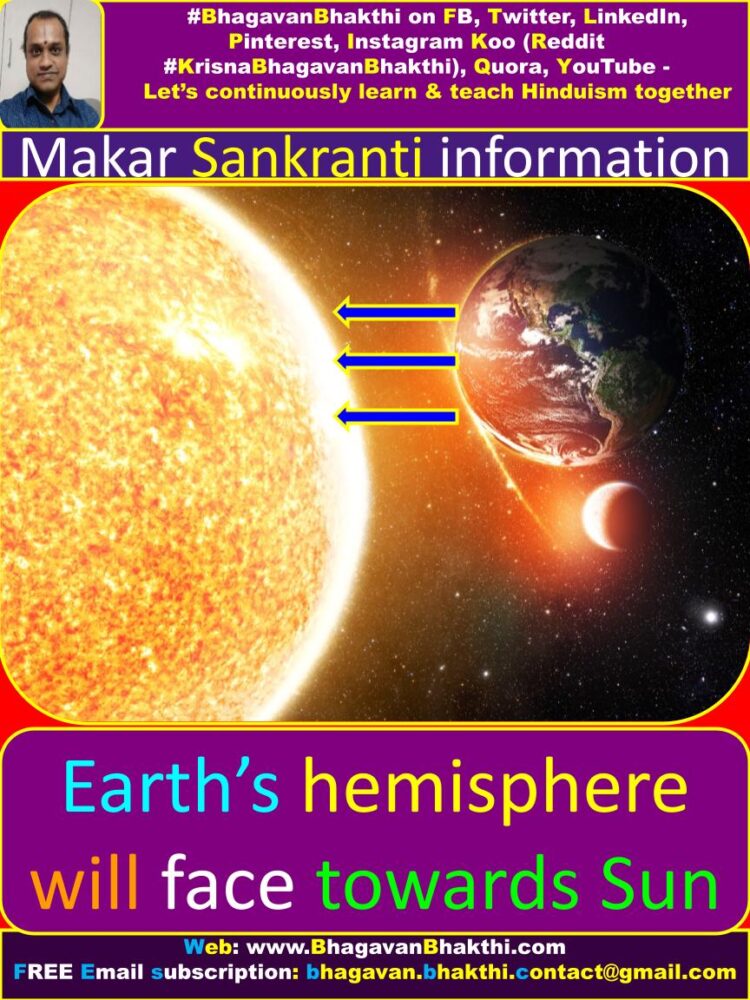
9. Harvest season for farmers : For farmers, it is a crucial time, as it marks the end of the long winter, and beginning of the summer, and a new harvest season.
10. Dakshinayana : As per Hindu belief, the Dakshinayana (Southern journey) of the Sun ends here, and it’s Uttarayana (Northern journey) towards the Tropic of Cancer, begins.
11. Sankranti date : This could be the reason why unlike other Hindu festivals, Sankranti usually falls on a fixed date, January 14 or 15.
One more factor is that Sankranti marks the end of a rather inauspicious phase (sometimes in mid-December), and the start of an auspicious time.
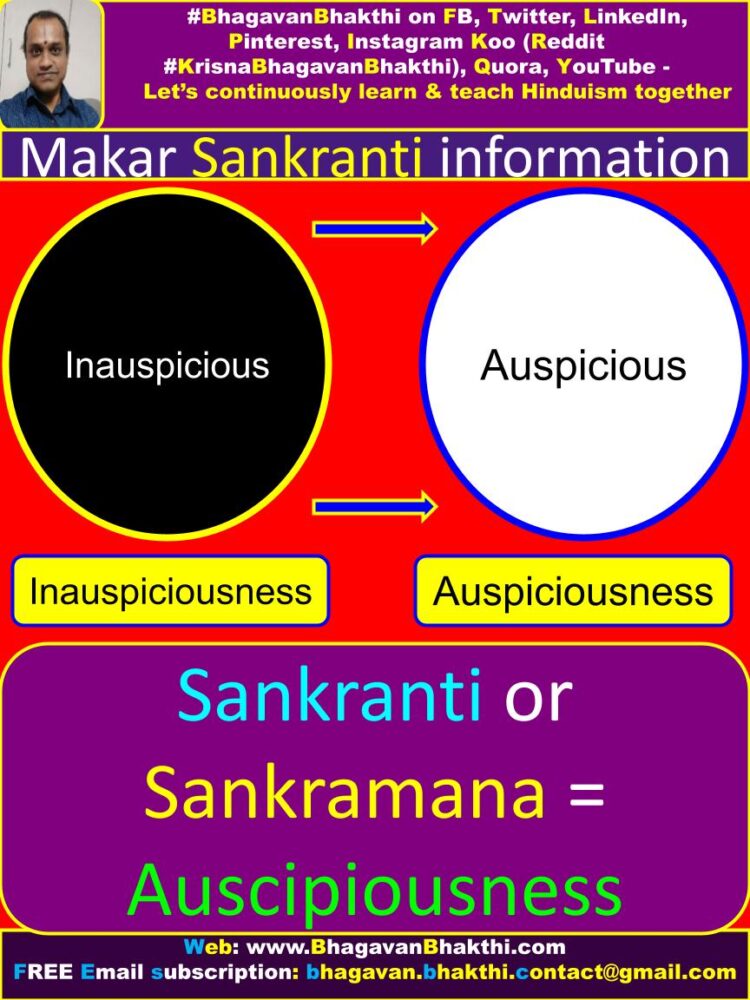
12. Passing away of Bhishma : Bhishma in the Mahabharat was believed to have passed away on Uttarayan, and therefore it has a religious significance too.
13. Other names of Makara Sankranti : While it is celebrated as Makara Sankranti in most Indian states, including Andhra Pradesh and Telangana, there are slight regional variations in other states.
Tamilians celebrate it as Thai Pongal, while Gujaratis observe it as Uttarayana. In Punjab, Himachal Pradesh and Haryana it is celebrated as Maghi, while for the Assamese it is Bhogali Bihu.
In Kashmir this is called as Shishur Saenkraat, and Karnataka observes it as Makara Sankramana.
14. Bhishma gave away his life : Today is the day when Bhishma concludes that he should give away his life after the battle of Kurukshetra.
(This he does as he gets confidence that Hastinapura is in the right hands, that is, with Yudhishthira).
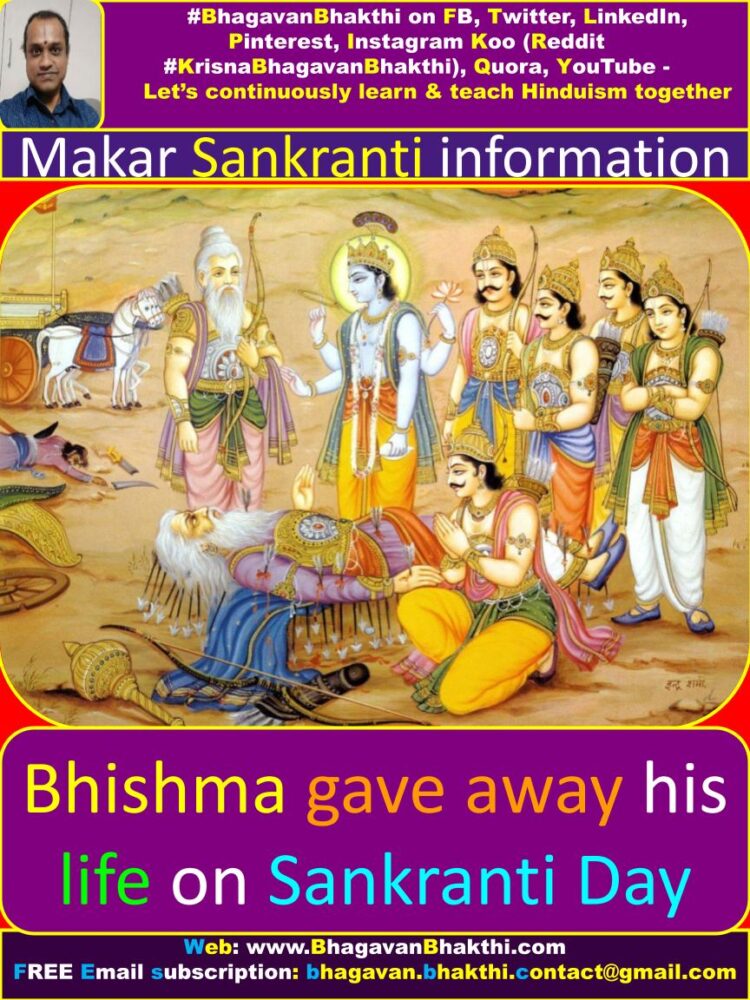
15. Lord Surya moves from dakshinayana to uttarayana : Sankranti is the day when Lord Sri Surya Deva (Sun God) moves from ‘dakshinayana‘ (south) to ‘uttarayana‘ (north).
16. Sankranti is sunrise for Devatas (Demigods) : Sankranti is that day, when the day time of the Devatas (Demigods) starts, that is, sunrise of the lokas (planets) of Devatas (Demigods).
From dakshinayana to uttarayana (six months) it is night for Devatas (Demigods) and similarly from uttarayana to dakshinayana it is day time for Devatas (Demigods) according to their graha / planet(s).
It is exactly like our earth in which evening 6pm to morning 6am is ratri (night time) and from 6am to 6pm it is divasa (day time).
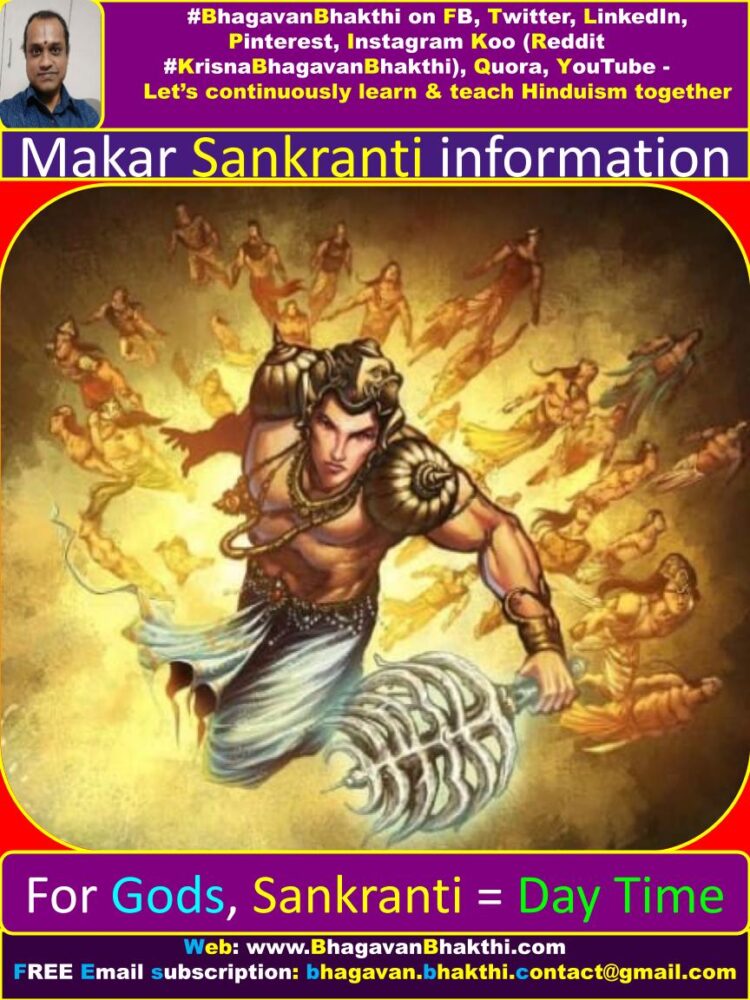
17. Both day and night both has same time frame on Sankranti : With this, it is on Sankranti that both day and night time frame will be of same and exact time.
That is, earth’s day time is equal to earth’s night time. Day time frame = Night time frame.
Also here a very important point to be noted is that, since adi time (unknown time), we had already known about the movement of Lord Sri Surya Deva (Sun God).
Bharata (India) has always provided greatest scientists to the world since the adi / unknown time.
We have been moving in vimana / aero-plane since ages. We were knowing the different grahas / planets since ages.
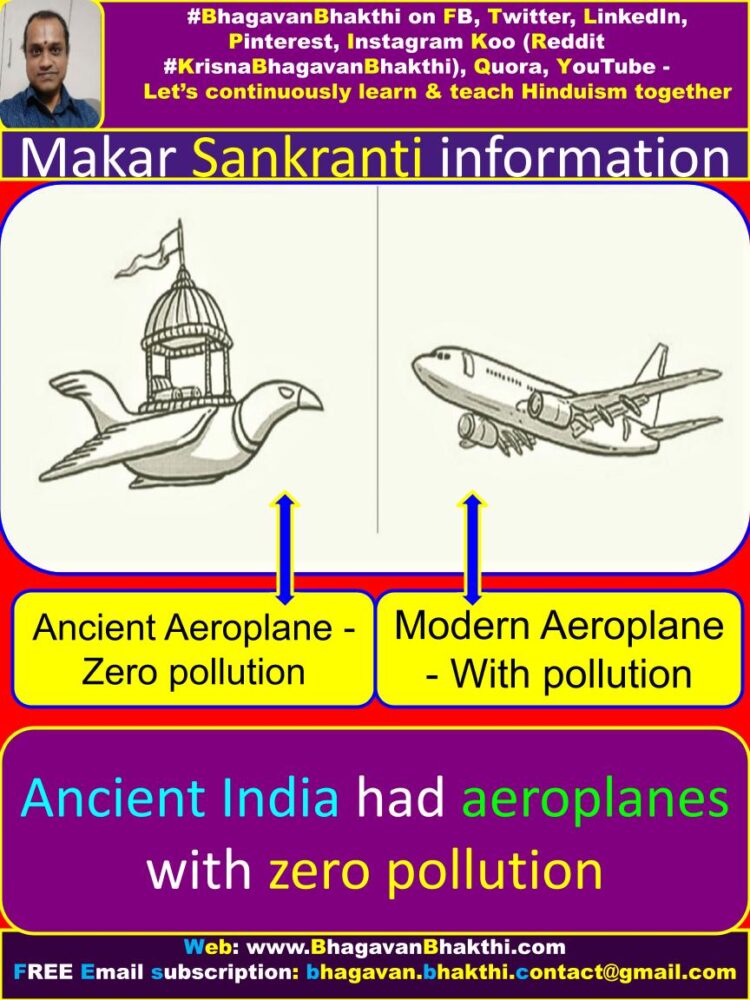
ONLY RECENTLY THE EUROPEANS FOUND ABOUT THESE THINGS.
JUST THINK WHO IS FORWARD IN SCIENCE AND TECHNOLOGY???
We should have great respect and pride about our country, culture and Sanatana Dharma.
Shubha Makara Sankranti / Makara Sankramana to you and to your family 😛
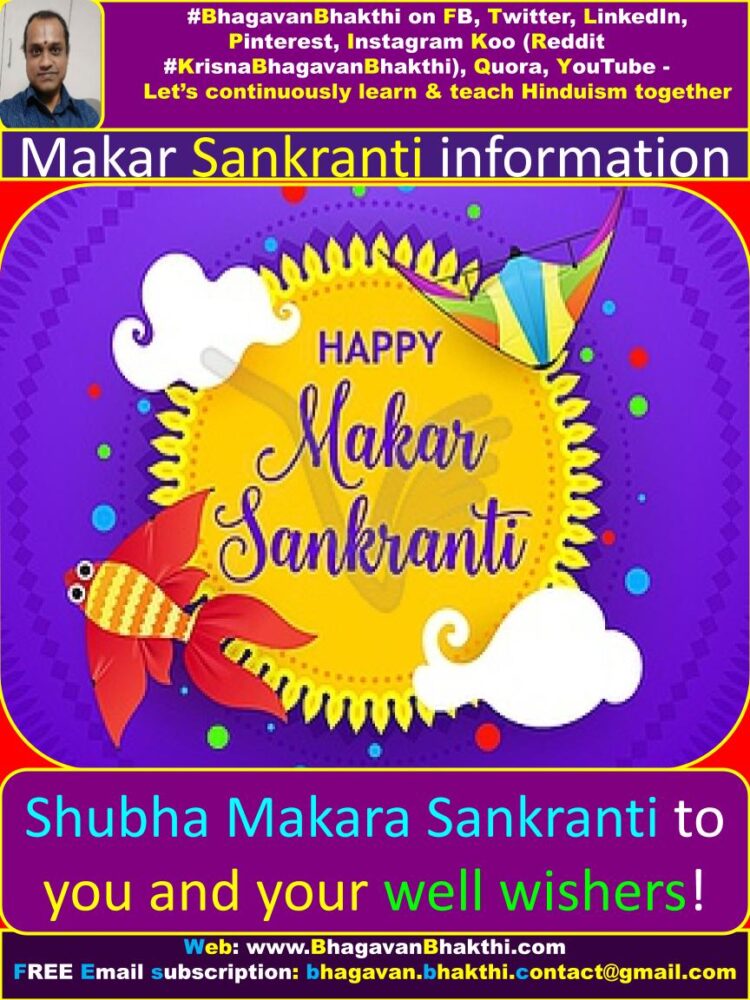
More information will be added to his post (article) on regular basis. Please visit again to know the updated information after some time.
To watch videos on #Hinduism #Sanskrit language, SUBSCRIBE to my YouTube channel from this below link:
#BhagavanBhakthi YouTube channel
To know more about “Hindu festivals information, significance, importance, facts, etc.“, please click the below link:
Hindu festivals information, significance, importance, facts, etc.
To read the Hindi translation of “Makar Sankranti information (facts) (spiritual, religious, significance) (importance) (specialty)“, you can click the below link:
To read the Kannada translation of “Makar Sankranti information (facts) (spiritual, religious, significance) (importance) (specialty)“, you can click the below link:
ಮಕರ ಸಂಕ್ರಾಂತಿ ಹಬ್ಬದ ಮಹತ್ವ – ಕನ್ನಡದಲ್ಲಿ
Dear friends, if you need any clarifications about this post, kindly let me know, I will definitely try to answer all of them.
Also your one LIKE, one COMMENT, One Share, one SUBSCRIPTION is highly important.
This will help to know the quality of this content and also it will be helpful to know if any improvements is required for the content.
If you feel this content is useful to you and has helped you to improve your knowledge, kindly share this with your well-wishers.
Because “SHARING MEANS CARING”.
For receive FREE EMAIL SUBSCRIPTION about #BhagavanBhakthi, you can send an email to bhagavan.bhakthi.contact@gmail.com from your email ID.
NAMASTE!
Sri Gurubhyo namaha
Sri Krishnaaya namaha
Sri Krishnaarpanamastu
Share in Social Media